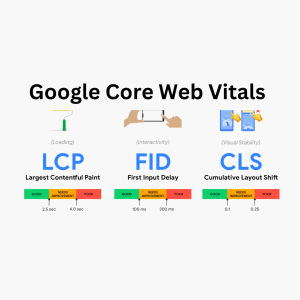Have you ever felt like you’re having a disjointed conversation with a chat bot, or received a machine translation that missed the mark entirely? These frustrations often stem from a limitation in Artificial Intelligence (AI) known as the context window. But fear not, the world of AI is undergoing a revolution with the rise of long context windows. This blog post will address what is a long context window. We will also unveil the magic behind long context windows, explore their impact on AI capabilities, and illuminate the exciting future they hold.
Understanding the Power of Long Context Windows: How AI Models Remember More
In the ever-evolving world of Artificial Intelligence (AI), particularly Large Language Models (LLMs), the concept of a long context window is gaining significant traction. But what exactly is it, and why does it matter?
What is a Context Window in AI?
Imagine you’re having a conversation with a friend. To understand your current response, they need to consider the previous things you’ve said. This “memory” of the conversation is crucial for a natural flow of dialogue. Similarly, in AI, a context window refers to the amount of previous information an LLM considers when generating text, making predictions, or completing tasks.
Think of it as a window through which the AI model “sees” the surrounding text. The size and content of this window significantly impact the model’s ability to understand the current situation.
Why are Long Context Windows Important?
Traditionally, LLMs had limited context windows, restricting their ability to grasp complex ideas or follow lengthy conversations. This resulted in responses that often lacked coherence or deviated from the original topic.
Long context windows address this limitation by allowing the model to analyze a broader swathe of preceding information. This empowers LLMs to:
- Generate more coherent and relevant text: With a wider context, the model can better understand the overall theme, tone, and relationships between words within a piece of writing. This leads to responses that are more on-point and flow seamlessly with the surrounding text.
- Improve accuracy in tasks: In tasks like machine translation or question answering, a longer context window allows the LLM to grasp the nuances of the input. This translates to more accurate translations and insightful answers that consider the complete context of the question.
- Facilitate reasoning and inference: By analyzing a larger chunk of text, the model can make logical deductions and inferences based on the information presented. This paves the way for AI systems that can not only understand information but also reason about it.
How Long is “Long” in a Long Context Window?
The ideal length of a context window depends on several factors, including:
- The specific task: Tasks requiring deeper understanding, like summarization or translation, might benefit from longer windows.
- The computational resources available: Processing larger amounts of data requires significant computing power.
- The trade-off between accuracy and efficiency: While longer windows improve performance, they can also slow down the model.
There’s no one-size-fits-all answer. However, recent advancements like Google’s Gemini 1.5 Pro model boasts significantly longer context windows, demonstrating the potential of this technology.
Examples of Long Context Windows in Action
Let’s see how long context windows can enhance AI interactions through real-world examples:
- Chatbots: Imagine a customer service chatbot. With a limited context window, it might struggle to understand a customer’s frustration built up over several messages. A long context window allows the chatbot to analyze the entire conversation, leading to more empathetic and helpful responses.
- Machine Translation: Accurately translating complex texts often requires understanding the context beyond individual sentences. A long context window enables the translation model to consider the overall flow and meaning of the text, resulting in more nuanced and accurate translations.
- Document Summarization: Summarizing lengthy documents effectively necessitates grasping the main points and their relationships. A long context window allows the AI system to analyze the entire document, identifying key elements and generating a concise yet informative summary.
These are just a few examples, and the possibilities with long context windows are vast. As AI technology continues to evolve, we can expect even more sophisticated applications that leverage this powerful concept.
The Future of Long Context Windows
The development of long context windows represents a significant leap forward in AI capabilities. As researchers continue to refine this technology, we can anticipate:
- LLMs that can engage in more natural and nuanced conversations, fostering seamless human-computer interaction.
- AI systems capable of tackling complex tasks that require deep understanding of context, such as legal document analysis or scientific research.
- The emergence of even more powerful AI applications that can reason, infer, and learn from vast amounts of information.
The future of AI looks bright, with long context windows playing a pivotal role in shaping intelligent and versatile AI models that can assist and augment human endeavors in various domains.
Additionally, we suggest reading out “Enhancing Website Measurement with Advanced Analytics Tools”.
Conclusion
The emergence of long context windows marks a paradigm shift in AI’s ability to understand and interact with the world. As research delves deeper, we can expect AI systems that not only mimic human conversation but also possess the reasoning power to tackle complex tasks.
This future promises AI assistants that can seamlessly integrate into our lives, offering intelligent support and amplifying human potential across diverse fields. By leveraging the power of long context windows, we are paving the way for a future where AI becomes a true collaborator, augmenting our capabilities and shaping a more intelligent tomorrow.





2 Responses